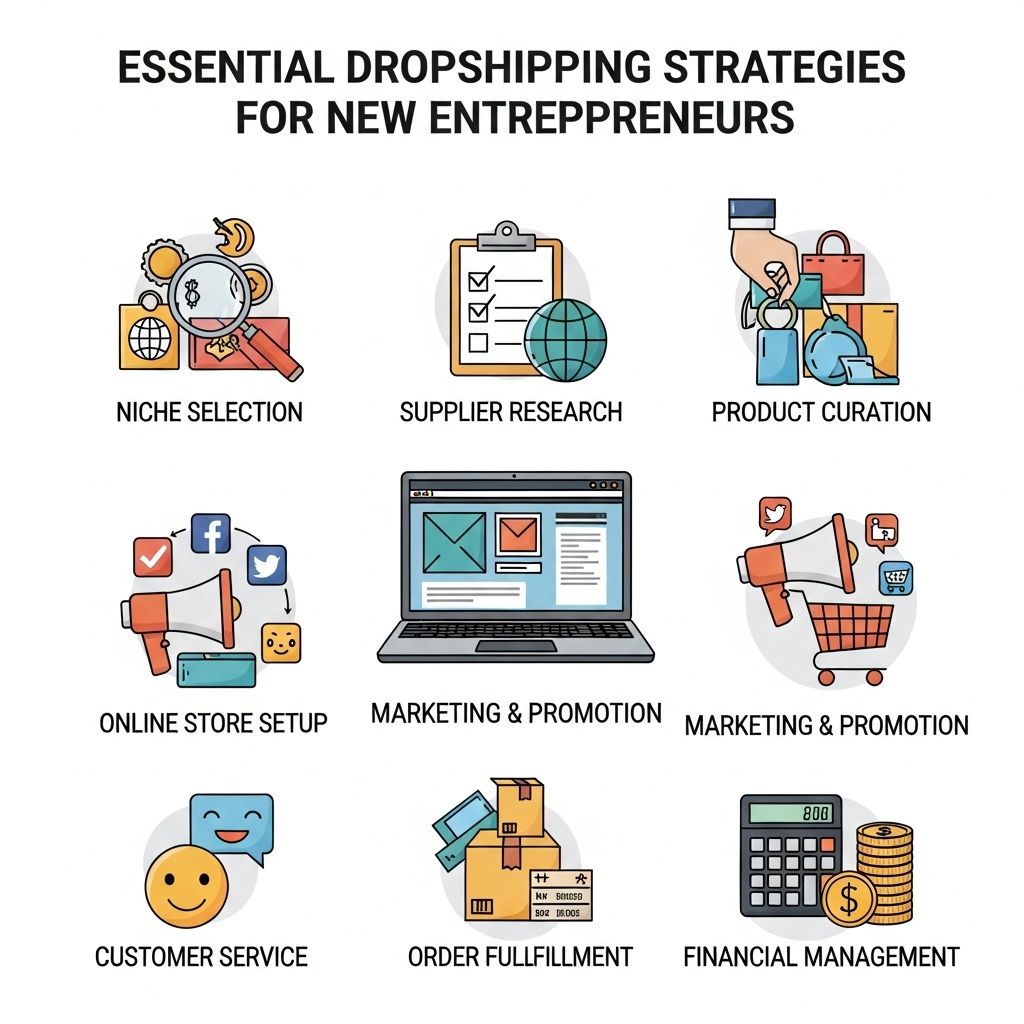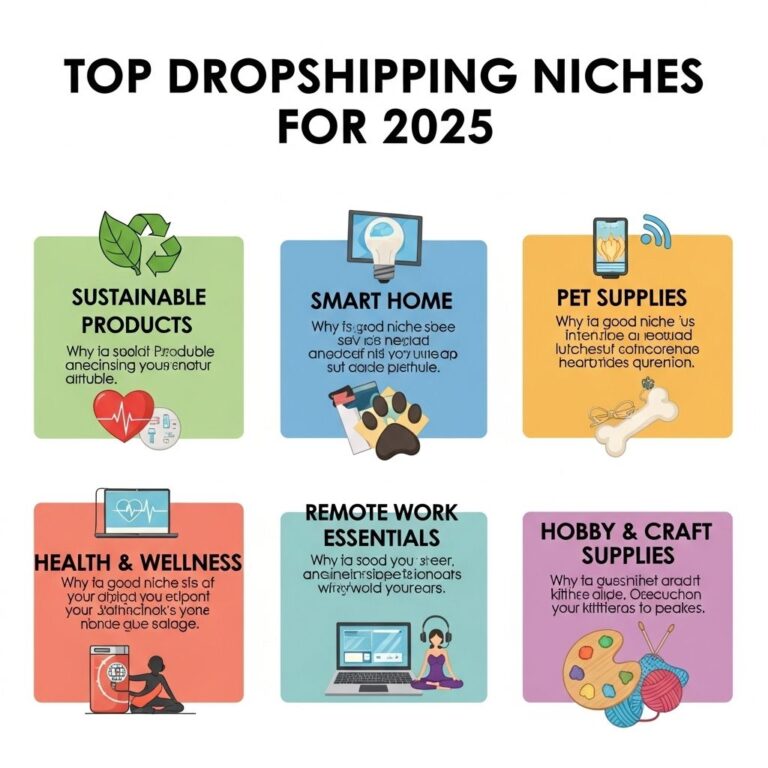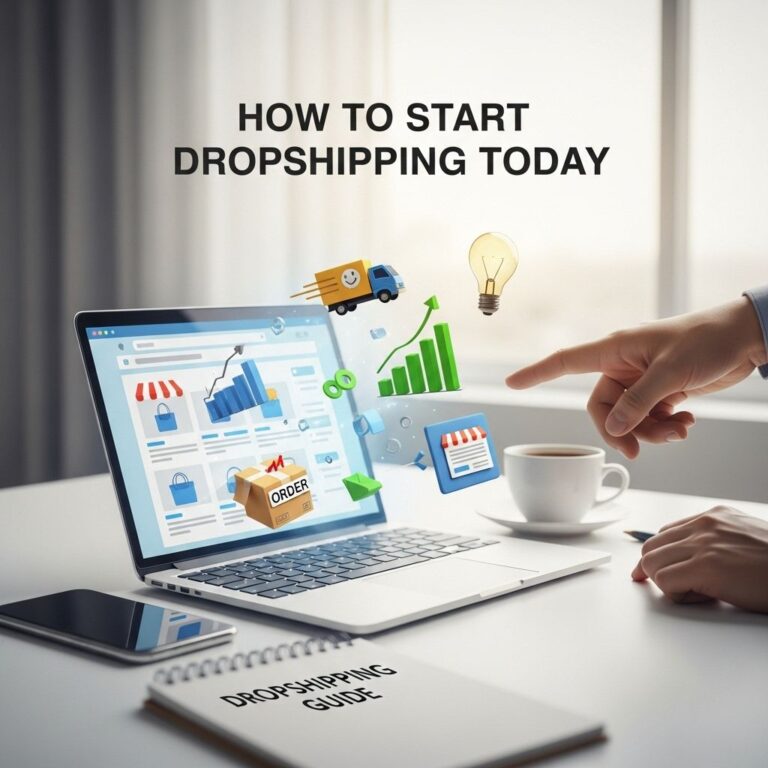Dropshipping has emerged as a popular business model among entrepreneurs looking to enter the e-commerce space with minimal investment. As a new entrepreneur, understanding the nuances of dropshipping is critical for success. With the right strategies, you can build a profitable online store without the hassles of inventory management. In this article, we will explore essential dropshipping strategies that can help you thrive in this competitive landscape.
Table of Contents
Understanding the Dropshipping Model
Before diving into strategies, it’s important to grasp the fundamentals of dropshipping. The dropshipping model allows you to sell products without holding inventory. Here’s how it works:
- You create an online store and list products for sale.
- When a customer makes a purchase, you forward the order to your supplier.
- Your supplier ships the product directly to the customer.
- You earn the difference between the retail price and the wholesale cost of the product.
Choosing the Right Niche
Your success in dropshipping largely depends on selecting the right niche. Here are some strategies to help you choose wisely:
1. Market Research
Conduct thorough market research to identify trends and consumer demands. Tools like Google Trends, social media insights, and keyword research can provide valuable data.
2. Competitive Analysis
Analyze your competitors to understand their product offerings, pricing strategies, and customer feedback. Look for gaps in the market that you can fill.
3. Passion and Knowledge
Select a niche that aligns with your interests and expertise. When you are passionate about the products you sell, it’s easier to engage with your audience and build a brand.
Finding Reliable Suppliers
Your choice of supplier can make or break your dropshipping business. Here are some tips for finding reliable suppliers:
1. Use Established Platforms
Platforms like AliExpress, Oberlo, and Spocket provide access to a network of vetted suppliers. Always check their ratings and reviews.
2. Order Samples
Before partnering with a supplier, order samples of their products to evaluate quality and shipping times. This firsthand experience can help you make informed decisions.
3. Establish Clear Communication
Communicate with potential suppliers to assess their responsiveness and willingness to collaborate. Strong communication can prevent future misunderstandings.
Creating an Engaging Online Store
Your online store is your brand’s face to the world. Here are some strategies to design an appealing website:
1. User-Friendly Navigation
Organize your store in a way that makes it easy for customers to find products. Consider the following:
- Use clear categories and subcategories.
- Implement a search bar for easy product discovery.
- Ensure your store is mobile-friendly, as many users shop on their smartphones.
2. High-Quality Product Images
Invest in high-quality images that showcase your products effectively. Multiple angles, close-ups, and lifestyle images can enhance customer trust and encourage purchases.
3. Compelling Product Descriptions
Write unique and informative product descriptions that highlight features and benefits. Use persuasive language that resonates with your target audience.
Effective Marketing Strategies
Once your online store is set up, it’s time to drive traffic to it. Here are some marketing strategies to consider:
1. Social Media Marketing
Leverage social media platforms to promote your products. Consider these approaches:
- Engage with followers through regular posts, stories, and live videos.
- Run targeted ads on platforms like Facebook, Instagram, and Pinterest.
- Utilize influencer marketing by collaborating with social media influencers to reach a larger audience.
2. Search Engine Optimization (SEO)
Optimize your online store for search engines to improve visibility. Focus on:
- Keyword research to understand what terms potential customers are searching for.
- Implementing on-page SEO techniques, including optimizing product titles and meta descriptions.
- Building backlinks through guest blogging and partnerships.
3. Email Marketing
Email marketing remains one of the most effective ways to engage customers. Consider these tactics:
- Build a mailing list by offering discounts or free resources in exchange for email sign-ups.
- Send regular newsletters featuring promotions, new products, and valuable content.
- Use automated email sequences for abandoned carts and follow-ups.
Understanding Financial Management
Effective financial management is vital for the longevity of your dropshipping business. Here are key areas to focus on:
1. Pricing Strategies
Establish a pricing strategy that covers costs and ensures a profit margin. Consider the following:
- Factor in all expenses, including product cost, shipping, and marketing.
- Research competitor pricing to remain competitive.
- Test different price points to find the optimal pricing for your products.
2. Monitor Cash Flow
Keep track of your cash flow to ensure sustainable growth. Use tools like accounting software to manage finances effectively.
3. Budgeting
Create a budget that outlines your expected expenses and revenue. Regularly review and adjust your budget based on actual performance.
Continuously Analyze and Optimize
The e-commerce landscape is constantly evolving, and as a dropshipper, you should be prepared to adapt. Here are ways to continuously improve your business:
1. Analytics Tools
Utilize analytics tools to track website traffic, conversion rates, and customer behavior. Google Analytics and Shopify Analytics can provide valuable insights.
2. A/B Testing
Perform A/B testing on your website elements, including product pages, call-to-action buttons, and advertising campaigns. This helps you determine what works best for your audience.
3. Customer Feedback
Encourage customer feedback and reviews to understand areas for improvement. Use this input to refine your product offerings and customer experience.
Conclusion
Success in dropshipping requires a combination of strategic planning, market research, and ongoing optimization. By implementing these essential strategies, new entrepreneurs can build a thriving dropshipping business that stands out in the competitive e-commerce landscape. With dedication, creativity, and the right tools, you can achieve your entrepreneurial dreams.
FAQ
What are the best dropshipping strategies for beginners?
The best dropshipping strategies for beginners include choosing a niche market, selecting reliable suppliers, optimizing product listings for SEO, utilizing social media marketing, and providing exceptional customer service.
How can new dropshippers find reliable suppliers?
New dropshippers can find reliable suppliers by researching online directories, attending trade shows, and using platforms like AliExpress, Oberlo, or SaleHoo to connect with vetted suppliers.
What are the key factors to consider when selecting a niche for dropshipping?
Key factors to consider when selecting a niche for dropshipping include market demand, competition level, profit margins, and personal interest or expertise in the products.
How important is SEO for a dropshipping business?
SEO is crucial for a dropshipping business as it helps improve organic search visibility, drives traffic to your store, and ultimately increases sales through better search engine rankings.
What marketing strategies should new dropshippers employ?
New dropshippers should employ a mix of marketing strategies such as social media advertising, influencer partnerships, email marketing, and content marketing to effectively reach their target audience.
How can I provide excellent customer service as a dropshipper?
You can provide excellent customer service as a dropshipper by responding promptly to inquiries, offering easy returns, tracking orders, and maintaining clear communication throughout the purchasing process.









